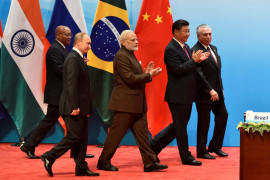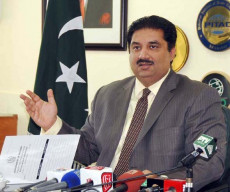
India and China pulled back from a tense standoff in Doklam before they met for the five-nation BRICS summit this past week. The fact that China also agreed to a joint declaration at the end of the summit, which has named militant groups allegedly based in Pakistan as a regional security concern, is being viewed as a significant diplomatic victory in India.
While Pakistan may have been caught off-guard by the above declaration, our Foreign Office was quick to point out that Afghanistan also faces the problem of banned militant groups operating from within its borders. While its own record on protecting minorities is hardly impressive, Pakistan has also expressed concern about the growing intolerance in the region. It is however hard to deny that the BRICS declaration does illustrate the increasing international consensus that Pakistan must clamp down harder on externally-oriented militant groups.
BRICS summit: LeT, JeM ‘threat to regional peace’
On the other hand, considering China’s endorsement of the BRICS declaration as a sign of its shifting attitude towards Pakistan would be an overstretch. It is important not to overestimate the significance of the BRICS declaration, and what it means for relations between Pakistan, India and China. The existing relationship between these three countries needs to be viewed from both a historical, and a broader geostrategic perspective.
Home to two-fifth of the world’s population, both India and China are indisputably world powers. However, there is lingering friction between these neighbouring giants, of which the tensions along the Sino-Bhutan border (Doklam) is but the latest reminder. Himalayan border disputes have earlier erupted in outright war in 1962, and border skirmishes in 1967 and 1987. Besides their own border disputes, China fears Indian preference and support for an independent Tibet, although India denies this claim. Similarly, India suspects Chinese support to insurgents, in the restive state of Assam.
This longstanding Sino-Indian hostility has served as an underlying motivation for China to develop close ties with Pakistan. Although ideologically they are poles apart, Pakistan and China’s have managed to persevere their ties through the years. Pakistan was careful not to strain ties with China during the time that it worked closely with the US under Cold War pacts, and during the proxy war against the Soviets in Afghanistan. China supported Pakistan during its major wars with India and has kept providing it military support, which continues till today.
Euphemisms of Pakistan and Chinese friendship aside, Pakistan has needed and actively courted China to guarantee its security vis-à-vis India, and, a strong Pakistan has helped prevent India from becoming assertive with China.
In recent years, China has also made significant inroads via ‘special friendships’ with other South Asian countries, in an attempt to contain Indian hegemonic aspirations. In countries like Sri Lanka, Chinese support was instrumental in eliminating the Tamil insurgency. India, on the other hand, has been moving towards closer ties with the US, Japan and other ‘China-wary’ Southeast Asian countries.
China-India spat signals last hurrah for BRICS
China’s decision to blame militant groups which may be present in Pakistan does not mean that this will necessarily improve its ties with India, nor that this concession will result in strained relations with Pakistan. Chinese investment in CPEC, and its discomfort with the increasing US-Indian defence cooperation, remain pressing concerns, the scale of which is much more ambitious than the current level of cooperation between BRICS nations. China does not want India to assert its presence in the South China Sea. India has also raised concern over CPEC, fearing greater Chinese influence in the Indian Ocean.
While the current power play in our part of the world is becoming increasingly complex, history still has a funny way of repeating itself, even if the permutations vary. The US’s strategic shift towards India reminds one of Nixon’s rapprochment with China to contain the USSR decades earlier.
Whether India and China will be able to forge an independent path of bilateral and regional cooperation, or else, continue to exploit regional insecurities to undermine each other, while themselves being subjected to US-led geostrategic powerplays, remains to be seen.
Published in The Express Tribune, September 8th, 2017.
Like Opinion & Editorial on Facebook, follow @ETOpEd on Twitter to receive all updates on all our daily pieces.




























































COMMENTS (5)
Comments are moderated and generally will be posted if they are on-topic and not abusive.
For more information, please see our Comments FAQ